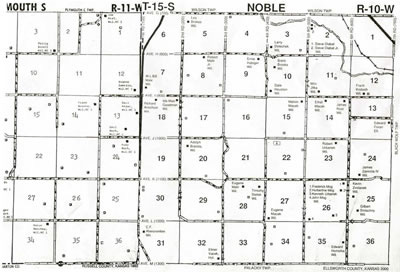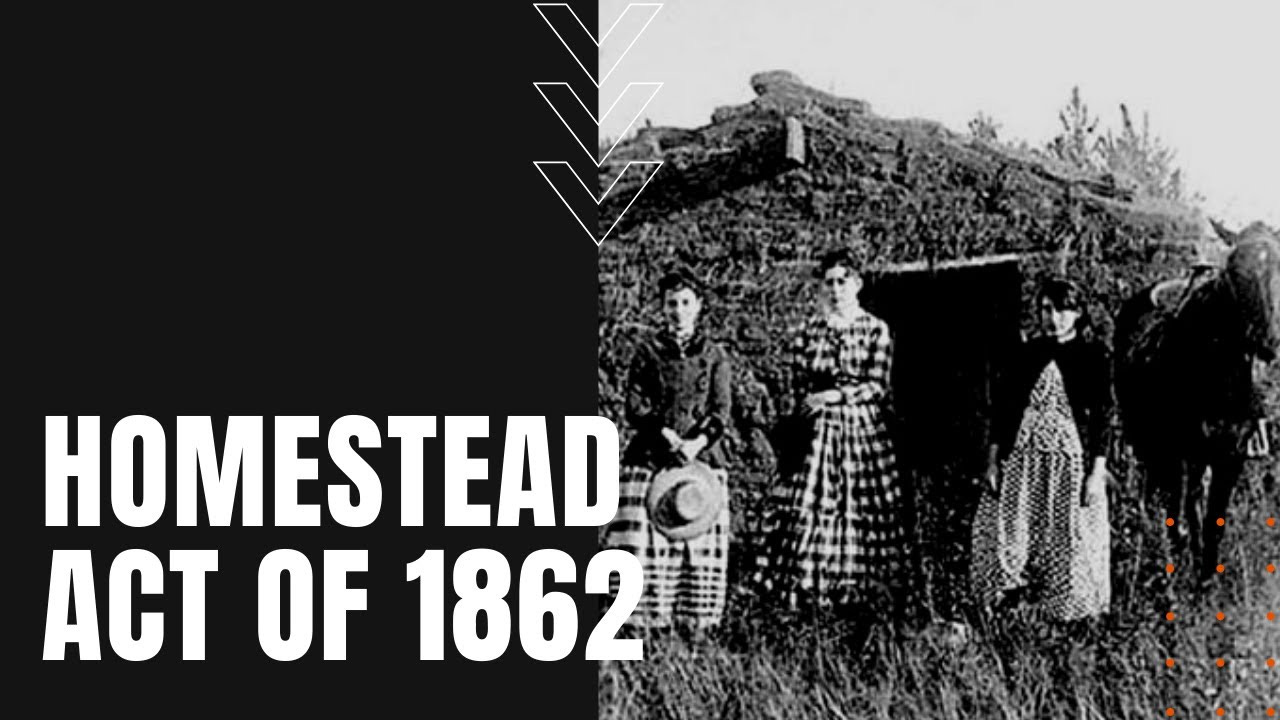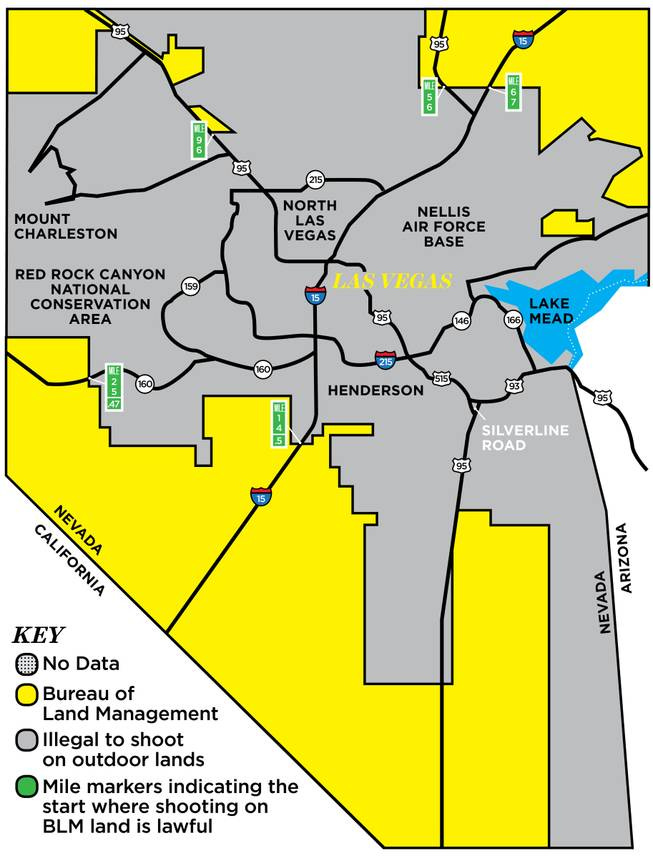We need a Homestead Act 2.0
Let's rediscover an American classic that can create affordable housing
In my previous posts, I listed reform proposals for how to make housing affordable within existing American cities.
These include:
And in my upcoming book on Upward Mobility, I will also advocate for policies that enable lower-income youths to move to affordable metros with jobs.
Even with all of the proposals mentioned earlier, this may not lead to affordable housing being constructed in enough volume to meet the needs of young people.
Government policies are difficult to change, and housing construction takes long periods. Unless the land value tax is implemented quickly, which is unlikely, landowners will have the incentive to wait out housing inflation so that they can make more profits at a later date.
So we need another plan. We need to Go Back to the Future!
Most of the following is an excerpt from my second book Promoting Progress: A Radical New Agenda to Create Abundance for All. You can order my e-books at a discounted price at my website, or you can purchase full-price ebooks, paperback, or hardcovers on Amazon.
Other books in my “From Poverty to Progress” book series:
This post is part of a multi-post series on Housing:
We need a Homestead Act 2.0 (this article)
A New Homestead Act
To radically boost home construction, we may need a new Homestead Act. The Homestead Act was passed in 1862 by Abraham Lincoln and the Republican party to encourage westward expansion. It was one of the most important Congressional acts in American history. The Homestead Act divided western lands owned by the federal government into 160-acre plots and made them subject to sale for only $10 as long as the owner lived on that land for 5 years and developed it into a viable home or farm.
While virtually all federal land in the Midwest has been sold off, huge tracts of federal land remain (see map below). Where the geography allows and where there is no unique wild habitat, the federal government should seriously think about founding new cities for settlement. This may seem unusual in the 21st Century, but it is a time-honored American tradition.
Because federal lands are largely in the Mountain West, that is where the new cities should be sited. Fortunately, the Mountain West has seen a massive increase in domestic migration from the unaffordable cities on the Pacific coast. Arizona, Nevada, Idaho, Utah, and Colorado are already some of the fastest-growing states in the Union.
Criteria for 21st Century Homesteading
In line with the original Homestead Act, the new act should enable people who could not otherwise afford land to purchase it for a reasonable price. The federal government should subdivide land into small parcels, just large enough for a single-family residence or duplexes. All purchasers of that land must:
Be an American citizen.
Have never owned a house previously.
Pay $10,000 for the land in equal payments over the next 5 years (or $166 per month) to the federal government.
Promise to pay for the construction of some sort of permanent habitation on their land within the next 5 years. Construction costs can be paid for in the form of a traditional mortgage.
Physically live in that permanent habitation for at least 5 years after the construction is complete.
Not sell the land to another party until after they have resided on that land for the full 5-year residence period.
Not own another house while residing on the land.
We could also potentially require that the family be eligible for the Working Family Tax Credit. This would ensure that the new city was populated by married working families with children.
An overall urban design in line with Shlomo Angel’s guidelines from Planet of Cities could be developed for each Homestead city. While some of the lands would be zoned for transportation corridors, open spaces, industry, and denser urban centers, the bulk of the land could be sold in 5000-square-foot plots.
An initial trial run of the concept could involve selling a large amount of the federal land that surrounds the existing metro area of Las Vegas (see map below). As far as I know, Las Vegas is the largest metro area in America that is largely surrounded by federal land. The boom-bust nature of the Las Vegas real estate market due to it being a tourist city makes this a little tricky, but it seems to be the best location to start.
If the Las Vegas experiment works well, then actual Homestead cities could be founded elsewhere. The exact location of the Homestead cities would be dependent on plenty of water, relatively flat ground for construction, and access to interstate highways.
So how do we do it?
To focus resources and limit the chance of financial boondoggles, the federal government should only establish one Homestead city at a time. Federal lands along the route of Interstate 80 in Nevada would make a good location to start, as it is the biggest single transportation corridor in the region. This land is overwhelmingly sparsely populated range land with little vital environmentally-sensitive habitat. The key constraint would be water, but the area does have large underground aquifers.
The future growth of these new urban areas would suffer from “the chicken or the egg” problem. People would not want to live in these new cities without jobs and basic amenities. Businesses would not want to expand to the area without a strong local market and a reliable pool of labor.
To encourage private investment, businesses, employers, construction companies, and residents should be completely exempted from federal taxes and all but the most essential federal regulations for a period of time. This would effectively create opportunity zones like those that proved so successful in China and other developing nations. Once a city has built its key urban infrastructure, has a solid population base, and is financially sustainable, then a new Homestead city could be founded along the same Interstate 80 corridor.
With a large portion of American employees working from home, it would not be necessary for large businesses to relocate to the metro to create initial employment opportunities. Of course, there would still need to be a substantial number of workers to construct water, sanitation, ground transportation, airports, electrical, and gas infrastructures.
Perhaps any worker who agrees to work for five years on construction sites in a Homestead city would be allowed to purchase their own plot of land. All of this construction of infrastructure would take time, but, with the incentive of cheap land and no taxes, the new cities would probably grow rapidly once the design had been completed.
Owners could choose to pay for the construction costs for any type of permanent structure on their plots of land: single-family residences, duplexes, AUDs, or mobile homes. They could also be allowed to construct retail and commercial space on the land, as long as they maintained their primary residence on the land. Most likely, owners would hire professional construction companies to do the actual construction.
One of the great benefits of my Homestead city proposal is that it would not cost the federal government any money (just like the original Homestead Act). The system would be self-financing by settlers and private businesses that seek to profit from new markets.
So let’s give the Homestead Act a rebirth!
Most of the above is an excerpt from my second book Promoting Progress: A Radical New Agenda to Create Abundance for All. You can order my e-books at a discounted price at my website, or you can purchase full-price ebooks, paperback, or hardcovers on Amazon.
Other books in my “From Poverty to Progress” book series:
This post is part of a multi-post series on Housing:













Now, in regard to this posting, I agree some form of new homesteading idea has merit, at least enough to justify deeper exploration of the legal and practical issues.
It is surprising how much the Civil War Congress accomplished in 1861 to 64, details of history that are not emphasized enough since the actual war history always takes precedence. I am pretty ignorant of those details, for sure.
I have no problems with your list of 7 criteria for the homesteaders getting this land, except to not be stupid about ensuring the candidates are good "mortgage" risks -- no unqualified subprime situations. But as a fan of the American architect Frank Lloyd Wright, I would push for plot sizes of at least 10,000 sq-ft. [100ft x 100ft is not much]. 1200 to 1500 sq ft for a modest well designed house + 600 sq ft for garage/ workshop (or larger?). Plus many (even modest) small businesses need more land than that.
"but the area does have large underground aquifers." If that is true, great, but there should be no doubt about its carrying capacity, etc. etc.
Are you envisioning "cities" perhaps 30 to 40 miles apart, with smaller commercial collectives and "villages" between them? Do we need to give some consideration to Jane Jacobs ideas about organic cities that grow as much as they are "designed"? Striking a balance between order and freedom?
An idea that is certainly worth discussing and debating.
I have fallen behind in reading your posts, as you have increased the # of posts per week substantially.
But I saw this title and dived in, for reasons apparent below.
I know this post is oriented to land and housing mobility promotion, etc. and the following is only indirectly oriented to that, being some sort of financial asset development scheme to provide initial start up capital to (basically) infants?? But it included "homesteading" as part of its core idea. I may not fully understand this idea, or agree with it to the extent that I do. But perhaps you will find it interesting as part of your program to increase mobility, etc.
Capital Homestead Act Summary
http://www.cesj.org/learn/capital-homesteading/capital-homestead-act-summary/
What Capital Homesteading Would Mean to the Average American
Projected Tax-Sheltered Wealth Accumulations and Pre-Tax Income Under Capital Homesteading
Copyright 2013 Center for Economic and Social Justice
[Now it gets embarrassing for me -- or for them.]
It looks like this idea was published initially in 2013 by the CESJ, but the above links now appear to be dead?? I found this info in 2016 and captured the above web pages in 2 Word files, plus two related pdf flyers or sheets, but I don't have links for the 2 pdf items.
Thus, at this juncture (if you were not already aware of this) you might want to do a search on "capital homesteading" and see what pops for you. Failing that, perhaps I can end up emailing my files to you somehow? Or you may not want to bother?
Apologies to the extent this comment is OT, but it seems much of Progress program has a lot of interconnections to other ideas.